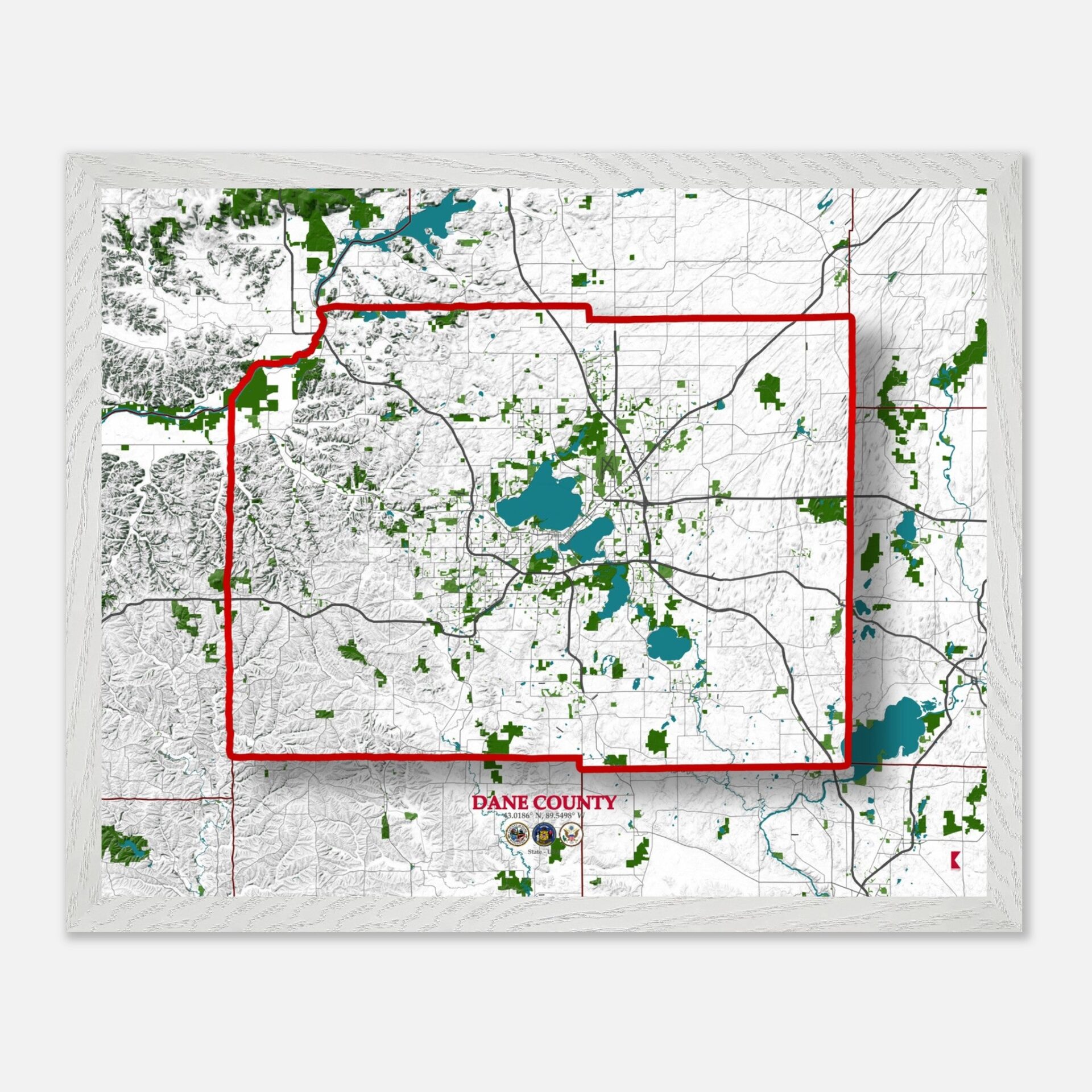Dane County Map: An In-Depth Guide of Wisconsin’s Vibrant Region
Nestled in the heart of southern Wisconsin, Dane County stands as a vibrant and diverse region with a rich tapestry of history, economy, and natural beauty. Located between the counties of Columbia to the north,
Green to the south, Jefferson to the east, and Iowa to the west, Dane County is centrally positioned in the state, offering a unique blend of urban and rural landscapes. As the home to the state capital, Madison, the county serves as a political, cultural, and educational hub for Wisconsin.
Dane County boasts a wealth of historical sites that capture its storied past. Noteworthy among these is the Wisconsin State Capitol in Madison, an architectural gem and a focal point of state government.
The county also preserves its heritage through the Dane County Historical Society Museum and several historic landmarks, including the Vilas House and the Pheasant Branch Conservancy. These sites provide a window into the county’s evolution from its early settlement days to its modern status.
Economically, Dane County thrives on a mix of industries, including technology, education, and agriculture. The presence of the University of Wisconsin-Madison anchors the county’s educational and research sectors, driving innovation and economic growth.
Additionally, agriculture remains a cornerstone of the local economy, with dairy farming and crop production playing significant roles. The diverse economic landscape ensures a robust and resilient local economy.
With a population of approximately 550,000 residents, Dane County is one of Wisconsin’s most populous counties. Covering an area of about 1,200 square miles, it presents a dynamic mix of urban centers and sprawling rural areas.
The county’s population density is higher in Madison and its surrounding suburbs, while more remote areas offer tranquil, open spaces.
Dane County and It’s Density
A well-connected County

Dane County is well-connected by a network of major highways and avenues that facilitate efficient travel throughout the region. Interstate 90/94 runs through the northern part of the county, linking it to the broader Midwestern network. U.S. Highway 12 and U.S.
Highway 18 provide critical east-west routes, connecting Madison to other key cities. State Highways 51 and 19 serve as important arterial roads, helping to manage traffic flow between smaller towns and the county’s urban core. These roads not only support daily commutes but also contribute to the county’s economic vitality by connecting businesses and residents.
It’s diverse landscape of rolling hills, valleys, and gentle slopes

The topography of Dane County is characterized by a diverse landscape of rolling hills, valleys, and gentle slopes. The county is situated within the Driftless Area, known for its unique landforms that escaped glacial erosion.
Prominent features include the beautiful Baraboo Hills to the north and the gently rolling terrain surrounding the city of Madison. The region’s varied topography contributes to its scenic beauty and influences local land use and agriculture.
It’s lush vegetation and diverse wildlife

Dane County is home to several significant national parks and natural reserves, offering a rich array of outdoor activities and natural experiences. The scenic beauty of the county is highlighted by the Token Creek County Park, known for its lush vegetation and diverse wildlife.
The Pheasant Branch Conservancy provides a natural sanctuary with its wetlands, prairies, and woodlands. The county enjoys a temperate climate with four distinct seasons, characterized by moderate summers and cold winters. Flora and fauna in these areas include native prairie grasses, oak forests, and a variety of bird species.
It’s environmental and recreational landscape

The county’s waterways play a crucial role in its ecology and local communities. Lake Mendota, one of the largest lakes in the county, is a popular recreational area and an important water resource for the city of Madison.
The Yahara River, which flows through the county, connects several lakes and provides vital water resources for agriculture and urban use. Other significant bodies of water include Lake Monona and Lake Wingra, each contributing to the county’s environmental and recreational landscape.
Dane County Map – WI: Unveiling the Heart of Wisconsin’s Scenic and Urban Wonders
| City | Population | Area (sq mi) |
| Madison | 269,000 | 94 |
| Sun Prairie | 37,000 | 35 |
| Fitchburg | 35,000 | 34 |
| Middleton | 21,000 | 28 |
| Verona | 13,000 | 25 |
| Other Towns and Cities | 175,000 | 1,028 |
| Dane County Total | 550,000 | 1,200 |
The Dane County map serves as a valuable tool for both practical navigation and decorative purposes. Featuring detailed insights into the county’s infrastructure, natural beauty, and historical landmarks, it can be a stunning addition to any home or office.




